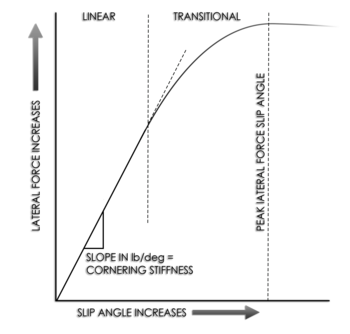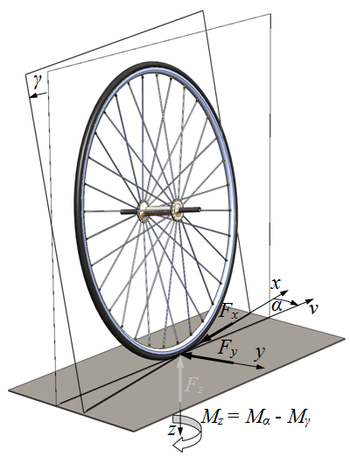This article needs additional citations for verification. (June 2018) |



In vehicle dynamics, slip angle[1] or sideslip angle[2] is the angle between the direction in which a wheel is pointing and the direction in which it is actually traveling (i.e., the angle between the forward velocity vector and the vector sum of wheel forward velocity and lateral velocity , as defined in the image to the right).[1][3] This slip angle results in a force, the cornering force, which is in the plane of the contact patch and perpendicular to the intersection of the contact patch and the midplane of the wheel.[1] This cornering force increases approximately linearly for the first few degrees of slip angle, then increases non-linearly to a maximum before beginning to decrease.[1]
The slip angle, is defined as
- ^ a b c d Pacejka, Hans B. (2006). Tire and Vehicle Dynamics (Second ed.). Society of Automotive Engineers. pp. 3, 612. ISBN 0-7680-1702-5.
- ^ Cossalter, Vittore (2006). Motorcycle Dynamics (Second ed.). Lulu.com. pp. 47, 111. ISBN 978-1-4303-0861-4.
- ^ Clark, S.K. (1971). Mechanics of Pneumatic Tires (1st ed.). NHTSA. Retrieved 26 February 2023.




